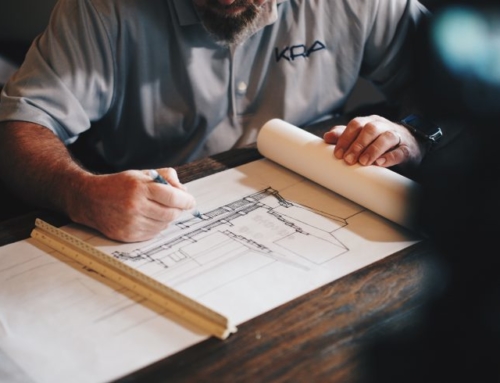If you are involved with collections or A/R and you’re not taking advantage of Mechanics Liens, you’re missing out on a huge opportunity. Liens are the most effective tool for combatting non-payment and collecting what you’ve earned.
What exactly is a mechanics lien? The mechanics lien was introduced to the United States over 200 years ago by none other than Thomas Jefferson. Jefferson believed that the people who were performing work—suppliers and subcontractors—did not deserve to be left out to hang, and that they needed leverage for collecting payment.
That’s exactly what a lien does. It provides leverage so that you can collect payment. In this post I’ll break down:
- How Liens Work
- Who Should File a Lien
- How to File a Lien
HOW DO MECHANICS LIENS WORK?
A lien is filed against an immoveable property (e.g. real estate)—typically the property that party filing the lien provided labor or materials toward improving. Once a lien is filed it operates in a number of ways to encourage payment. Here are a few of the big ones:
A LIEN ENCUMBERS THE PROPERTY
Liens are recorded with land records and appear on a title search of the property. Practically speaking, this makes it very difficult to sell, refinance, or otherwise transfer the property.
A LIEN GETS THE PROPERTY OWNER’S ATTENTION
Because liens are filed against a property, they’re a big red flag to property owners. If you’re a supplier or subcontractor hired by somebody other than the owner, the owner will be incentivized to step in and resolve your payment issue in order to have the lien removed. If you were hired directly by the owner, they will likewise want to resolve the payment dispute.
A LIEN GETS THE LENDER’S ATTENTION
Many construction projects have a lender that finances the project, and these lenders almost always have a mortgage against the property to secure their claim. When you file a lien, you’re interrupting that security interest—in some states, you’ll even receive priority over the lender’s interest. As such, lenders are also encouraged to step in and resolve your payment dispute.
A LIEN GIVES YOU A FINANCIAL STAKE IN THE PROPERTY
In the event that all of the above fails (this happens in approximately 2% of liens filed with zlien) you still have an equity stake in the property to fall back on. This means that you can enforce your lien in court to foreclose on the property and recoup the money that is owed to you.
SHOULD I FILE A LIEN?
When you provide labor and/or materials towards the improvement of real, immoveable property, you are automatically granted by law the right to file a lien. Even though liens are filed against a piece of property, but you don’t have to have a direct relationship with the property owner in order to file a lien. In fact, most often that is not the case.
Those who file liens tend to be lower-tiered parties, e.g. subcontractors, material suppliers, and equipment lessors. That’s because these parties are most vulnerable to payment issues, they bear the brunt of financial risk on a project, and they are usually the last to be paid. General contractors, though they don’t utilize liens as often, can also benefit from filing them.
If your invoice is past due and your efforts to collect payment have been met with resistance, filing a lien may be your solution to getting paid. Keep in mind, however, that every state has a different deadline by which a party can file a lien. These deadlines range from months to years after the end of project. Most states also require that you send a preliminary notice in advance of filing a lien. (You can find each state’s requirements at zlien.com/resources.)
HOW DO I FILE A LIEN?
The process of filing a lien is nuanced and bureaucratic. Every state has different requirements, and all of the following must be considered:
- The information written on the lien
- Whom the lien must be sent to, in addition to the recorder’s office
- Formatting of the lien (font size, margins, placement of text, etc.)
- Delivery method of the lien (e.g. certified mail versus certified mail return receipt)
- Legal description of the property
- Filing fees
One option is to file yourself, however, you run the risk of filing incorrectly. Every lien will be unique according to a number of subtle details, so templates will only help so much. Note also that the majority of liens require a notary signature. As far as actually filing the lien goes, some states will allow you to mail the lien. In others, you must visit the recorder’s office in person (or send a courier). Other states allow electronic recording.
If you don’t want to file yourself, you could hire a lawyer, or a lien and notice service. These will be more accurate, but they can also be pricy. zlien enables you to file yourself from your computer in just minutes.
In short, construction parties that have supplied labor or materials and are not being paid file mechanics liens. Liens force payment by encumbering the property on which the lien was filed and involving the property owner and lender in the non-payment issue. Filing a lien also provides the option of enforcing the lien in court to foreclose on the property and recover payment.
ABOUT THE AUTHOR
Danny Garfield is the Inbound Marketing Manager at zlien, a cloud-based platform that exchanges lien waivers and notices and monitors lien compliance, thus empowering a fair and transparent construction payment process for more than 10,000 companies.




